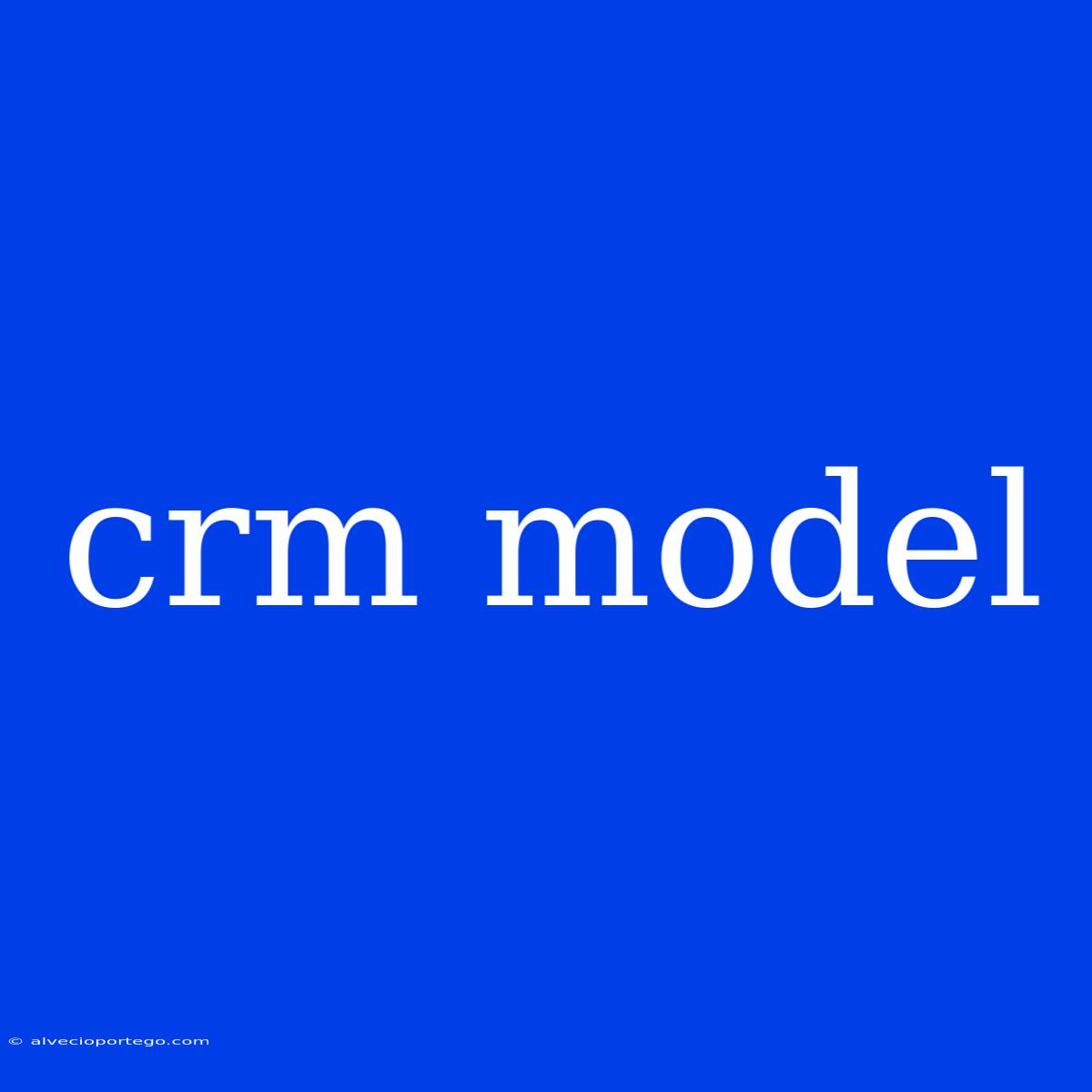CRM Model: A Comprehensive Guide
A CRM (Customer Relationship Management) model is a strategic framework businesses employ to manage and enhance interactions with their customers throughout the entire customer lifecycle. It encompasses various processes, systems, and technologies aimed at improving customer satisfaction, loyalty, and ultimately, driving business growth.
Understanding the CRM Model
The CRM model revolves around the idea that focusing on customer relationships is crucial for long-term business success. It involves:
- Collecting and analyzing customer data: Gathering information about customers' preferences, behaviors, and interactions. This data is essential for understanding individual needs and tailoring experiences.
- Segmenting customers: Dividing customers into groups based on shared characteristics to deliver personalized messages and targeted offerings.
- Personalizing interactions: Providing customized experiences for each customer based on their unique preferences and needs.
- Building strong relationships: Fostering trust and loyalty by actively engaging with customers, addressing their concerns, and offering exceptional service.
Key Components of a CRM Model
A comprehensive CRM model typically includes:
1. Customer Data Management:
- Data Acquisition: Collecting customer data from various sources like website forms, social media interactions, purchase history, and surveys.
- Data Storage and Security: Ensuring data is securely stored, organized, and readily accessible for analysis.
- Data Cleaning and Validation: Maintaining data accuracy and consistency to ensure reliable insights.
2. Sales and Marketing Automation:
- Lead Management: Identifying potential customers, nurturing their interest, and guiding them through the sales funnel.
- Marketing Automation: Automating tasks like email campaigns, social media posting, and targeted promotions based on customer behavior.
- Salesforce Automation: Simplifying and optimizing the sales process through tools like pipeline management, forecasting, and opportunity tracking.
3. Customer Service and Support:
- Ticketing System: Managing customer inquiries and issues efficiently through a centralized system.
- Knowledge Base: Providing self-service options and quick answers to frequently asked questions.
- Live Chat and Phone Support: Offering real-time assistance for immediate customer needs.
4. Analytics and Reporting:
- Dashboard and Reporting Tools: Providing visual representations of key customer metrics and trends.
- Predictive Analytics: Leveraging data to forecast customer behavior, identify potential churn, and optimize marketing campaigns.
- Segmentation and Targeting: Analyzing customer data to identify specific customer segments and tailor marketing strategies accordingly.
Benefits of Implementing a CRM Model
- Improved Customer Satisfaction: By understanding customer needs and preferences, businesses can deliver more personalized and relevant experiences, increasing satisfaction.
- Enhanced Customer Loyalty: By fostering strong relationships and providing exceptional service, businesses can build lasting customer loyalty, leading to repeat purchases and referrals.
- Increased Sales and Revenue: By focusing on customer acquisition and retention, businesses can achieve greater sales and revenue growth.
- Streamlined Operations: Automating tasks and processes through CRM systems can improve efficiency, productivity, and reduce costs.
- Data-Driven Decision Making: Access to valuable customer insights enables businesses to make data-driven decisions that enhance all aspects of their operations.
Choosing the Right CRM System
Selecting the right CRM system depends on a variety of factors, including:
- Business size and complexity: Choose a system that scales with your business needs.
- Industry and target audience: Ensure the CRM system is suitable for your industry and caters to your specific target audience.
- Budget and resources: Consider the cost of implementation, maintenance, and training.
- Integration with existing systems: Ensure the CRM system integrates seamlessly with your current software and systems.
Conclusion
Implementing a CRM model is a strategic investment that can significantly impact a business's success. By focusing on customer relationships and leveraging data-driven insights, businesses can improve customer satisfaction, drive growth, and achieve long-term sustainability.

